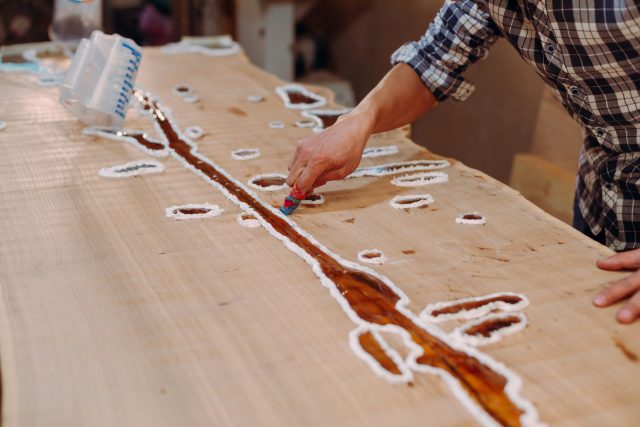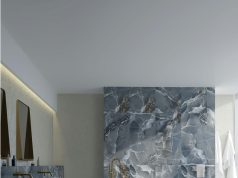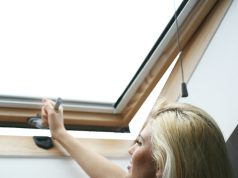
Resin river tables represent a unique fusion of natural beauty and modern craftsmanship, distinguishing themselves in the realm of furniture design with their signature “river” of epoxy that weaves through slabs of wood, mirroring the graceful flow of water. What began as a niche interest has burgeoned into a coveted piece of decor, celebrated for its blend of organic wood textures and the sleek, modern look of resin. These tables have surged in popularity, highlighting the allure of handcrafted pieces that draw inspiration from the natural world to enhance interior spaces. Their adaptability across various decorating styles, coupled with the innovative approach to their creation, illustrates the limitless potential when merging creativity with classic materials.
Incorporating an epoxy resin table into your home or workspace introduces a touch of elegance and innovation. The careful craftsmanship required to blend the natural imperfections of wood with the pristine clarity of epoxy resin results in a masterpiece that transcends traditional furniture. Each epoxy resin table is not just a functional item but a conversation piece, a testament to the artful blend of nature with modern design aesthetics.
The Basics of Resin and Wood Fusion
Epoxy, a versatile synthetic material, stands out in furniture making for its durability and glossy finish. It’s pivotal in creating tables where it acts as both a binder and a key design feature, allowing for the addition of colors to mimic natural scenes within wood. This process not only beautifies but also protects and extends the furniture’s life.
Choosing the right wood is crucial, with a preference for hardwoods like walnut, maple, oak, and teak for their durability and aesthetic grain. These species provide a strong base for the epoxy and add character through their natural textures and colors, enhancing the overall design. Emphasis on sustainable wood sourcing is growing, with a shift towards reclaimed or responsibly harvested timber to reduce environmental impact.
Key terms in the creation process include:
- Live Edge: Keeping the wood’s natural contours, live-edge slabs frame the epoxy, creating a “river” effect.
- Epoxy River: The table’s focal point, achieved by pouring tinted epoxy between wood slabs, simulating a river. This can be customized in color for various aesthetics.
- Casting: The technique of pouring epoxy into a space between the slabs, potentially layering colors or embedding objects for a unique finish.
This introduction to wood and epoxy fusion underscores the blend of creativity and natural elements in producing tables that are both functional and visually captivating.
Design Inspirations and Creative Processes
The charm of river tables stems from their innovative mix of materials and the vast inspirations driving their designs. Nature’s landscapes, with their winding rivers, tranquil lakes at dusk, and vibrant geological colors, are intricately mirrored in these tables. Additionally, abstract art and modern design trends contribute to their allure, introducing a mix of colors, textures, and forms that evolve beyond conventional furniture design.
Inspiration Sources:
- Natural Landscapes: The serene flow of water bodies is beautifully captured with epoxy rivers, framed by the wood’s untouched edges.
- Abstract Art: This genre’s expressive freedom lets makers experiment with colors and methods, crafting distinct, original items.
- Modern Design Trends: The influence of minimalism and bold contrasts shapes river table designs, ensuring they complement contemporary spaces seamlessly.
Creative Process:
- Wood Selection: Begins with selecting suitable wood, considering grain, color, and aesthetics, with natural edges guiding the epoxy flow.
- Design Conceptualization: Designs are inspired by chosen themes, contemplating table size, epoxy color, and enhancements like rocks or LEDs.
- Preparation and Molding: Wood undergoes sanding and treatment, followed by mold construction to contain the epoxy.
- Mixing and Pigmentation: Epoxy is carefully mixed with pigments to achieve precise colors and effects.
- The Pour: Epoxy is layered between wood slabs, employing various techniques to add depth and uniqueness.
- Curing and Finishing: Post-pour, the table cures before demolding, sanding, and polishing to a high gloss.
Color Selection and Effects:
Color choice and mixing techniques are vital for achieving visual impact. Transparent effects and metallic pigments can mimic natural elements, with light play altering the table’s look throughout the day. Techniques like heat application, color layering, or object embedding further customize each piece.
Techniques and Tools
Creating a table with a river design involves precise methods and a variety of tools and safety gear. Mastery of these methods ensures the table is not only visually appealing but also durable.
Key Techniques:
- Sealing: Essential to prevent air bubbles; a thin layer of sealant is applied to the wood, enhancing its grain and color.
- Pouring: A critical step where the mixture, often colored, is poured into the mold to achieve desired effects, such as clarity or depth.
- Curing: The material must harden, a process taking 24 to 72 hours, vital for optimal durability and clarity.
- Demolding and Sanding: After hardening, the piece is removed from the mold and sanded from coarse to fine grits for smoothness.
- Polishing: The final step to achieve a high gloss, enhancing both the clarity and the wood’s natural beauty.
Essential Tools and Safety Equipment:
- Tools:
- Mixing Tools: For combining materials and hardener.
- Pouring Tools: To accurately pour the mixture.
- Sanding Equipment: Orbital sanders and sandpapers of various grits.
- Polishing Tools: Pads, machines, and compounds for a glossy finish.
- Protective Mold: To shape and hold the mixture.
- Clamps and Supports: For stability during hardening.
- Safety Equipment:
- Respirators: To avoid inhaling fumes.
- Gloves: To protect skin from uncured material.
- Protective Eyewear: To guard against splashes.
- Ventilation: Essential for dispersing fumes.
- Protective Clothing: To shield skin and clothes from spills.
Proper methods and appropriate tools are crucial for crafting a river design table, ensuring its aesthetic appeal and the safety of the creator.
Caring for Your Epoxy Table
Epoxy tables are not only striking in appearance but are also remarkably durable. However, like any piece of fine furniture, they require proper care and maintenance to preserve their beauty and extend their lifespan. Here are some essential tips on how to care for your epoxy table:
Cleaning:
- Regular Dusting: Use a soft, dry cloth or microfiber duster to remove dust and debris. Avoid abrasive materials that could scratch the surface.
- Gentle Cleaning: For more thorough cleaning, use a soft cloth dampened with water or a mild dish soap solution. Avoid using harsh chemicals, as they can damage the resin’s finish.
- Dry Thoroughly: After cleaning, ensure the table is completely dry. Use a clean, soft cloth to prevent any water spots or streaks.
Scratch Repair:
- Minor Scratches: Small scratches can often be buffed out using a soft cloth and a polishing compound designed for epoxy resin. Follow the product instructions carefully.
- Deep Scratches: For deeper scratches, it may be necessary to lightly sand the area with fine-grit sandpaper (e.g., 2000 grit) before applying a polishing compound. Always sand gently and evenly to avoid creating divots or further damage.
- Professional Repair: For significant damage, consider consulting a professional. They can apply a new layer of resin to restore the table’s surface to its original condition.
UV Protection:
- Direct Sunlight: Prolonged exposure to direct sunlight can cause the resin to yellow over time. If possible, position your table away from direct sunlight or use UV-protective window films to minimize exposure.
- Use Protective Coatings: Some epoxy resins come with UV inhibitors, but additional protective coatings can be applied for extra protection. Look for UV-resistant sprays or varnishes that are compatible with epoxy resin.
- Regular Inspection: Keep an eye on your table for any signs of UV damage and reapply protective coatings as necessary to ensure ongoing protection.
Additional Tips:
- Use Coasters and Placemats: Protect the surface from heat and moisture by using coasters under beverages and placemats under dishes.
- Avoid Sharp Objects: Prevent scratches and nicks by keeping sharp objects away from the table surface.
- Regular Maintenance: Periodically inspect your table for any signs of wear or damage. Early detection can make repairs easier and less costly.
By following these care and maintenance tips, you can ensure your epoxy table remains a stunning centerpiece in your home for many years to come. Regular cleaning, careful use, and protection from environmental factors will help maintain its beauty and functionality.
The versatility of epoxy tables allows them to transcend traditional decor styles, making them suitable for a wide range of interior themes, from rustic to ultra-modern. Whether as a dining table, coffee table, desk, or decorative piece, these tables offer an unparalleled opportunity to introduce a focal point into any room that is both functional and profoundly beautiful. The care and maintenance of these pieces ensure their longevity and enduring appeal, making them not just furniture, but heirlooms that can be cherished for generations.
As we reflect on the journey from conceptualization to creation, it’s clear that epoxy tables are more than the sum of their parts. They are a celebration of the possibilities that arise when human creativity interacts with the natural world. For those looking to infuse their living spaces with a piece that exudes elegance, character, and a touch of the avant-garde, an epoxy table is an excellent choice. It invites homeowners and designers alike to explore the myriad possibilities of incorporating such unique items into their decor, ensuring that each space not only reflects personal style but also embodies the cutting edge of design innovation.
We encourage readers to consider the beauty and versatility of epoxy tables as they curate their living environments. In embracing these magnificent creations, you welcome a piece of the artisan’s vision and craftsmanship into your home, enriching your decor with a blend of tradition and modernity that is truly unmatched.













